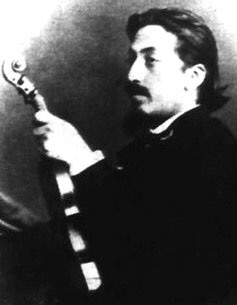Isaac Stern – Edouard Lalo – Symphonie Espagnole, Op.21
Eugene Ormandy conducting Philadelphia Symphony Orchestra
I. Allegro non troppo
II. Scherzando
III. Intermezzo
IV. Andante
V. Rondo
*****************************************************************************
The Symphonie espagnole in D minor, Op. 21, is a work for violin and orchestra by Édouard Lalo.
History
The work was written in 1874 for violinist Pablo de Sarasate, and premiered in Paris in February 1875.
Although called a “Spanish Symphony” (see also Sinfonia concertante), it is considered a violin concerto by musicians today. The piece has Spanish motifs throughout, and launched a period when Spanish-themed music came into vogue. (Georges Bizet‘s opera Carmen premiered a month after the Symphonie espagnole.)
The Symphonie espagnole is one of Lalo’s two most often played works, the other being his Cello Concerto. His “official” Violin Concerto in F, and his Symphony in G minor, written thirteen years later, are neither performed nor recorded as often.[citation needed]
Structure
- Allegro non troppo
- Scherzando: Allegro molto
- Intermezzo: Allegro non troppo
- Andante
- Rondo: Allegro
A typical performance runs just over one-half hour. One of the shorter recordings, conductor Eugene Ormandy’s 1967 recording with the Philadelphia Orchestra, featuring violinist Isaac Stern, runs 32 minutes and 43 seconds.[1]
Influence on Tchaikovsky
The Symphonie espagnole had some influence on the genesis of Tchaikovsky‘s Violin Concerto in D major. In March 1878, Tchaikovsky was staying at Nadezhda von Meck‘s estate at Clarens, Switzerland, while recovering from the breakdown of his disastrous marriage and his subsequent suicide attempt. His favourite pupil (and possibly his lover), the violinist Iosif Kotek, shortly arrived from Berlin with a lot of new music for violin. These included the Symphonie espagnole, which he and Tchaikovsky played through to great delight. This gave Tchaikovsky the idea of writing a violin concerto, and he immediately set aside his current work on a piano sonata and started on the concerto on 17 March.[2] With Kotek’s technical help, the concerto was finished by 11 April.
References
- “Lalo: Symphonie Espagnole”. CD Universe. Retrieved 26 January 2014.
- Detroit Symphony Orchestra




































































































You must be logged in to post a comment.